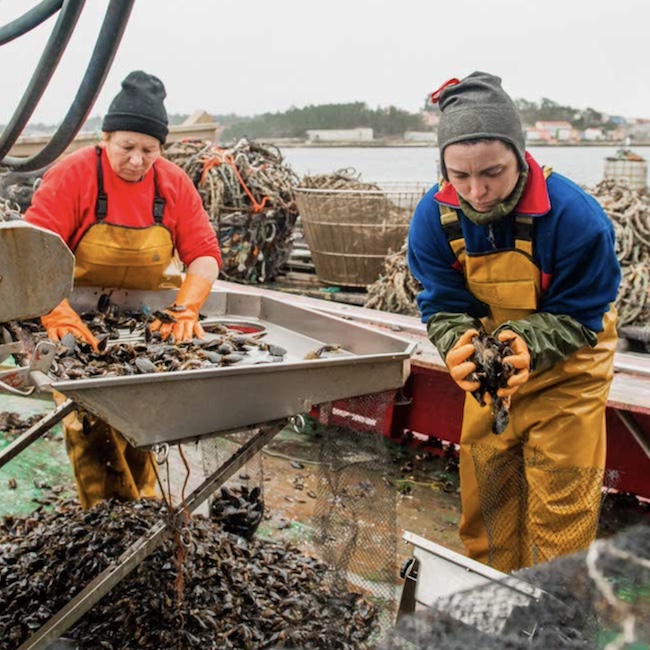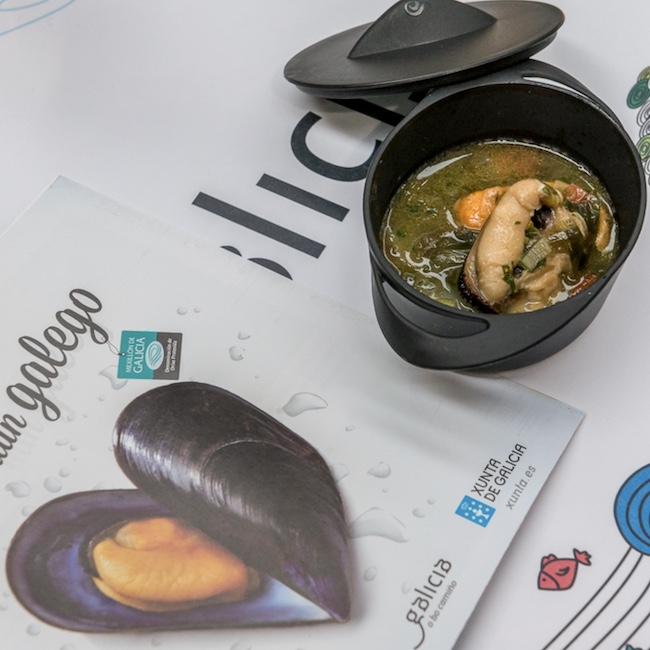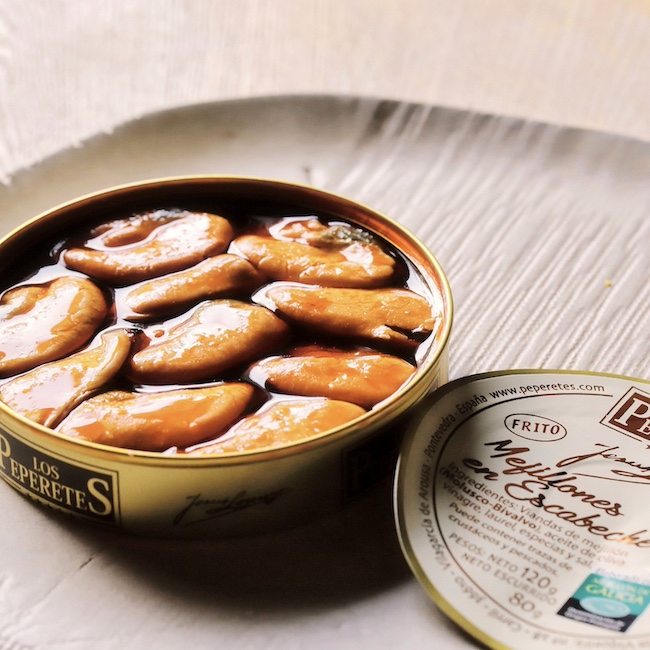.png.transform/rendition-xs/image_image%20(1).png)
Mussels from Galicia, Excellence and Tradition
You need only to open a can to enjoy this Atlantic treasure: one of Spanish most appreciated gastronomic delicacies
If there's one characteristic element of the Galician estuaries—a region in northwestern Spain—it's the floating wooden platforms, which could be mistaken for wooden rafts when you see them for the first time. In the middle of the water, they are structures with ropes to which Galician mussel larvae attach themselves to grow. They spend more than a year there, feeding on phytoplankton. Fun fact: according to the Food and Agriculture Organization of the United Nations (FAO), Galicia is home to one of the largest deposits of phytoplankton on the planet.
Therefore, it's unsurprising that mussels are among the region's most appreciated gastronomic delicacies. They can be eaten fresh but, fortunately for foodies, they can also be found canned all over the world. One extremely prestigious brand is Los Peperetes (Carril, Pontevedra), of which soccer star David Beckham is a big fan. “More than 30 years ago, my family started canning mussels from the Arosa estuary and the positive response from the people who tried them encouraged them to create a workshop to increase production," explains Jesús Lorenzo, general manager of Los Peperetes.
Los Peperetes makes its canned mussels using only raw materials protected by the Mejillón de Galicia PDO seal, the only European designation that recognizes marine products. This PDO establishes a series of conditions, like all mussels must come from the Galician estuaries, and also the morphology of the mussel: the shell is axe-shaped and is pointed and thick at the front and thick and very sharp at the back. The external color is bluish-black, while inside, the mollusk is orange.
For Lorenzo, the main reason Galician mussels are recognized for their quality is the strategic location of the Galician estuaries: "There are freshwater currents from the rivers, but there's also a notable salinity, which creates a unique ecosystem," he explains. Among his recipes, the most well-known is fried mussels in escabeche (escabeche is a form of marinade made from vinegar, oil and garlic, bay leaves, and other aromatic herbs), although they also prepare them naturally or in Galician sauce, using a "recipe that our mother makes personally with a base of peppers, tomato, and olive oil that's like a hot stew."

The gastronomic possibilities of mussels
Eating a Galician mussel is, in itself, a pleasure, but it can also be used as a raw material for other recipes. Roi Lojo, product manager of Roi&Co, a new company that launched its own line of pickled mussels, knows this well. In a small warehouse on a little beach in Isla de Arosa (on the Galician estuary of the same name), they prepare "the best gift from the sea, following my family's traditional recipes," explains Lojo.
Although Roi&Co does not yet work with PDO-certified mussels, they choose only the best product, for which they have their own techniques: "In this case, we use those located at the bow of the platform, which are the first to receive the incoming water, thereby benefiting from a greater amount of nutrients," Lojo says. In his case, they place them in cans that specifically detail the number of mussels they contain instead of a range, like other brands do.
Another distinguishing feature is the marinade prepared by Roi&Co, which is milder than normal. "Although it's a ready-to-eat marinade, it can also be used in other dishes. For example, it can be used to make the mayonnaise for a Russian salad. It can also be used in rice dishes, using the marinade to make the sofrito sauce and then finishing it with the mussels.”

Tradition and Sustainability
The excellence of the Galician canned industry has numerous more examples: for instance, Real Conservera Española, which shone in the awards for World’s 101 Best Canned Products from the Sea, granted at the end of December 2023. Among the products that caught the attention of the jury of these awards were their fried mussels in escabeche. Galician canneries with a long tradition in production include Cabo de Peñas (founded in 1898), Rosa Lafuente (since 1901), and Ramón Peña (with a history dating back to 1920). All of them produce canned mussels.
Mussels are also sustainability heroes: they feed through filtration, which means they purify the water they live in by consuming algae and other microscopic particles. This natural filtering process not only keeps mussels incredibly clean but also has a positive impact on the marine ecosystem. Compared to many other forms of seafood production, mussel farming has a minimal environmental footprint. Mussels absorb carbon dioxide from the water as they grow, helping to combat ocean acidification, a major threat to marine life. Many bateas also prioritize sustainable practices, such as using biodegradable materials for ropes and minimizing waste.

International growth of a premium product
The quality of Galician mussels knows no borders. Los Peperetes, with more than 30 years in the market, has a presence in 37 countries. "More than 20 years ago, we were one of the first small canneries to prove that not only the biggest names could export," says Lorenzo. They're present in "practically all of Europe, and also Puerto Rico, Mexico, Canada, South Africa, Thailand, and Hong Kong."
They can also be found in the United States, where José Andrés helped introduce Los Pepertes to local consumers. "We have been co-branding with him for 10 years and he has become our best ambassador," Lorenzo says, getting emotional. A simple way to experience Spain: listen to José Andrés and empty a bag of potato chips on a plate, and put the contents of a can of mussels in escabeche on top. Yes: a perfect appetizer (and with the best product).

